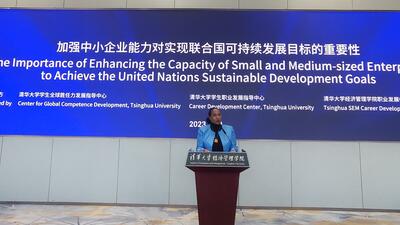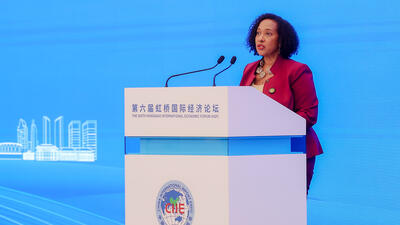
Realizing the untapped export potential of manufactured goods of developing countries to China: new ITC report
(Shanghai/Geneva) – Exports from developing countries in the Belt and Road Initiative (BRI) could increase by up to $318 billion by 2027, if they move beyond primary goods to more manufactured products, according to a new report of the International Trade Centre (ITC), released during the China International Import Expo in Shanghai.
Since the launch of the BRI a decade ago, world trade has drastically changed, due to changes in global partnerships, COVID-19, conflict, climate change and cost-of-living increases. Exports from participating developing countries to China soared by 79% during this time. Yet almost half of the export potential from these countries to China is unrealized.
The report, called Exporting to China: Opportunities for developing countries in the Belt and Road Initiative, identifies sectors, by region, with untapped export opportunities to China in coming years.
While Asian countries account for the bulk of unrealized export potential to China – 65% ($206 billion) - all regions have substantial opportunities for growth: $111 billion for the Americas, $70 billion for Africa, $33 billion for Europe and $3 billion for the Pacific.
Africa: A large share of the opportunities is in metal-based products (precious, ferrous and others) and other resource-based sectors (such as wood and paper products), but there are also opportunities in less traditional sectors (such as motor vehicles and parts, machinery and electricity, and chemicals).
Americas: Two-thirds of the opportunities are concentrated in metal-based products, with other promising sectors being paper products, chemicals and wood.
Asia: Prospects for export growth are in electronic equipment, machinery and electricity, plastics and rubber, with additional opportunities across other sectors such as chemicals and optical products, with significant variability across subregions.
Europe: More than 40% of the unrealized manufacturing export potential to China is in ferrous and non-precious metals, with the remainder being quite diversified, among chemicals, machinery and electricity, plastics and rubber, precious metals and fertilizers, to mention a few.
Pacific: The most promising sectors are precious and non-precious metals, non-ferrous metals, and wood.
Realizing this manufacturing export potential to China would not only increase total exports by 6%, but it would also shift the composition of exports to China to include one-third of processed goods, away from the dominance of raw products.
To capitalize on the export potential of the more value-added sectors, targeted policies promoting sustainable and inclusive export growth are essential.
Note for the Editor
About the International Trade Centre - The International Trade Centre is the joint agency of the World Trade Organization and the United Nations. ITC assists small and medium-sized enterprises in developing and transition economies to become more competitive in global markets, thereby contributing to sustainable economic development within the frameworks of the Aid-for-Trade agenda and the United Nations’ Sustainable Development Goals.
For more information, visit www.intracen.org.
Follow ITC on Twitter | Facebook | LinkedIn | Instagram | Flickr
Media contacts
Susanna Pak
Senior Strategic Communications Officer
International Trade Centre
E: pak [at] intracen.org
T: +41 22 730 0651
M: +41 79 667 4660
Tianyu Mao
Senior Programme Manager
International Trade Centre
E: tmao [at] intracen.org (tmao[at]intracen[dot]org)






